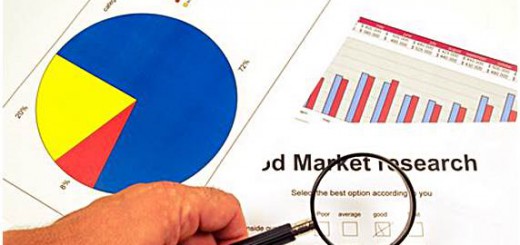Elements of Statistics Application of Statistics
Statistics is defined as a discipline that includes procedure and techniques used to collect, process and analyze numerical data to make inferences and to reach decisions in the face of uncertainty. Statistics are the numerical quantities calculated from sample observation, a single quantity that has been calculated is called a statistic.
The word statistics comes from the Latin word status meaning a political state, it originally meant information useful to the state, for example, information about the sizes of population of the armed forces. But this word has acquired different meanings.
Statistics is the science of assembling, calcifying, tabulating and analyzing numerical facts or data. Statistics is not just a set of formulas to memorize for “plug and chug”. Although formulas are necessary, can be used in many situations and a person as a potential analyst in private, business, and public life can perform useful statistical analysis.
Over the past several decades, the primary emphasis of statistics has switched from data presentation to the development of procedures that can be used to deal with uncertainty. After all, most decisions regarding resource allocations in profit and nonprofit organizations are made under uncertainty. The decisions maker never knows exactly what is going to happen. There are basically two aspects of statistics that deal with uncertainty: communicating information under uncertainty and analyzing decisions under uncertainty.
As a subject statistics can be divided into two parts:
Descriptive statistics is that branch of statistics which deals with concepts and methods concerned with summarization and description of the important aspects of numerical data. This area of study consists of the condensation of data, their graphical displays and the computation of a few numerical quantities that provide information about the center of the data and indicate the spread of the observations.
Inferential statistics deals with procedures for making inferences about the characteristics that describe the larger group of data or the whole, called the population, from the knowledge derived from only a part of the data, called a sample.
CHARACTERISTICS OF STATISTICS
- It deals with the behavior of aggregates or large groups of data. It has nothing to do with what is happening to a particular individual or object of the aggregate.
- It deals with the variability that obscures underlying patterns. No two objects in the universe are exactly alike. If they were there would have been no statistical problem.
- It deals with the uncertainties as every process of getting observations whether controlled or uncontrolled, involves deficiencies or chance variation. That is why we have to talk in terms of probability.
- It deals with those characteristics or aspects of things which can be described numerically either by counts or by measurements.
- Statistics deals with those aggregates that are subject to a number of random causes e.g. the heights of persons are subject to a number of causes such as race, ancestry, age, diet, habits, climate and so many other factors.
- Laws of statistics are valid on the average or in the long run. There is no guarantee that a certain law will hold in all cases. Statistical inference is therefore made in the face of uncertainty.
- Statistical results may be misleading and incorrect if sufficient care in collecting, processing and interpreting the data is not exercised or if the statistical data are handled by a person who is not well versed in the subject matter of statistics.
IMPORTANCE OF STATISTICS
- Statistics assists in summarizing the larger sets of data in a form that is easily understandable.
- Statistics assists in efficient design of laboratory and field experiments as well as surveys.
- Statistics assists in sound and effective planning in any field of inquiry.
- Statistic assists in drawing general conclusions and in making predictions of hoe much of a thing will happen under given conditions.
- Statistical techniques being powerful tools for analyzing numerical data are used in almost every branch of learning. In the biological and physical sciences, Genetics, etc. are the main areas where statistical techniques have been developed and are increasingly used.
- A businessman, an industrialist and a research worker all employ statistical methods in their work. Banks, insurance companies and governments all have their statistics departments.
- A modern administrator whether in public or private sector, leans on statistical data to provide a factual basis for decisions.
- A politician uses statistical advantageously to lend support and credence to his arguments while elucidating the problems he handles.
Examples of managerial situations using statistics
In order to appreciate more fully the broad applicability of statistical methods, several applications of statistical methodologies are presented. These are only a few examples of several questions that a manager can amicably solve by using statistical methods:
- How to summarize sales information?
- Which candidate should get the job?
- Which advertising plan should we adopt?
- Should I send the lot back?
- Where to build a firehouse?
Probability and its applications
Business decisions and economic analysis often face an uncertain environment. Under uncertainty, one does not know which of several events or outcomes will occur in future. Because of the importance of uncertainty, a precise terminology for dealing with uncertainty is needed. Probability theory is that precise terminology; it is the language of uncertainty.
Today the probability theory has a wider field of application and is used to make intelligent decisions in Economics, Management, Operations research, Sociology, Psychology, Astronomy, Physics, Engineering, and Genetics where risk and uncertainty are involved.
Index numbers and their applications
An index number is a statistical measure of average change in a variable or group of variables with respect to time or space. Index numbers are descriptive statistics.
Index numbers are used in many situations. A firm choosing a new plant location may be interested in the price of consumer goods, which might be an important factor in determining the wage rates necessary for a given location. An organization in promoting highway safety might be interested in an index of highway accidents to determine where a safety campaign should be instituted. Many labor contracts contain so called “escalator clauses” that relate pay to the consumer price index, an index published by US department of labor, which estimates the price changes for a well defined set of consumer goods. A person seeking a retirement home might be interested in the price of consumer goods in various places, to aid in determining where to live after retirement.













